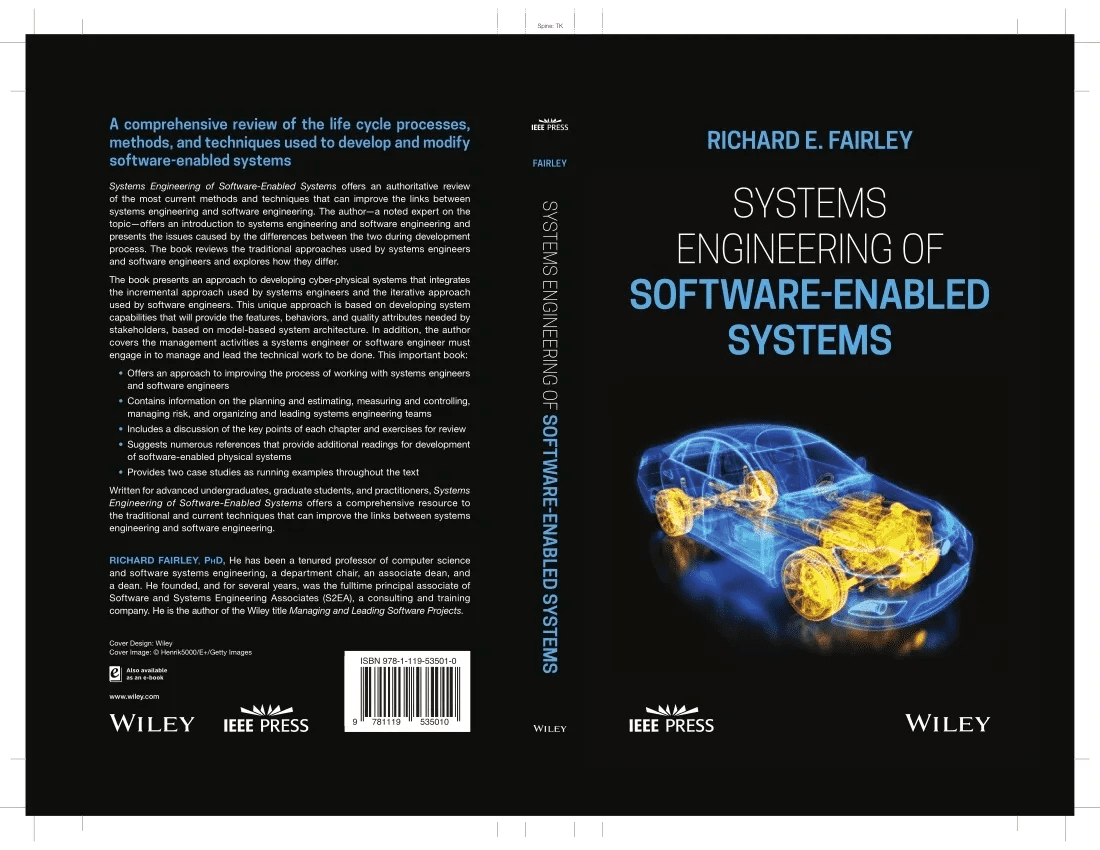
This book, released in 2019, came highly recommended through the INCOSE Systems and Software Integration Working Group (SaSI WG). Richard Fairley, the author, shares his deep expertise and experience developing what he calls Software Enabled Systems (SESs). He continues by pointing out that most systems developed today fall into the category of a SES.
What kept me glued to this book was the logical and clear descriptions of the roles and responsibilities of Systems Engineers (SE), Physical Systems Engineers (PhSE), Software Systems (SwSE) Engineers and Software Engineers. He explains why these engineering domains oftentimes don’t understand the context and challenges addressed by adjacent domains. He goes on to suggest how these engineering domains can work toward common understandings that can result in improved results. As a systems and software business owner, you can imagine how this discussion caught my attention.
The book does a great job at providing references to the essential systems and software standards, guides, handbooks and wikis available to practicing engineers today. These include the two guideposts: ISO/IEC/IEEE standard 15288: Systems and software engineering – System life cycle processes; and ISO/IEC/IEEE standard 12207: Systems and software engineering – Software life cycle processes. However, the book provides a tremendous set of extended resources that systems and software engineers can use to improve competency, understand engineering context, and integrate systems and software concepts to make better systems.
Part II of the book puts systems and software engineering of SESs together into processes. The book proposes an Integrated-Iterative-Incremental (I3) system development model and walks the reader through an easy to follow vehicle simulator example. What strikes me as a reader is the logical progression of engineering tasks that fall into the category of “needs to be done” but when, where and why we do it is explained in the I3 system development model. Underlying it all is the common denominator of engineers accomplishing what was promised to their customers/stakeholders
Part III of the book, Technical Management of Systems Engineering, which I’m just getting into, is likely the best part of the book. I am anticipating this based on the content and quality of Parts I and II. As practitioners, we know management is a competency many of us did not learn and develop in school, but have had to learn in practice. I’m certain this part has gens I won’t want to miss.
Mr. Fairley has produced a brilliant piece of work. He has shared the lessons of a lifetime and career developing SESs. He has done an exceptional (best I’ve seen) job bringing two disciplines together in an easy to read and follow text. Get a copy today (Click here) and Thank You to Richard for putting this much needed work together for all.
